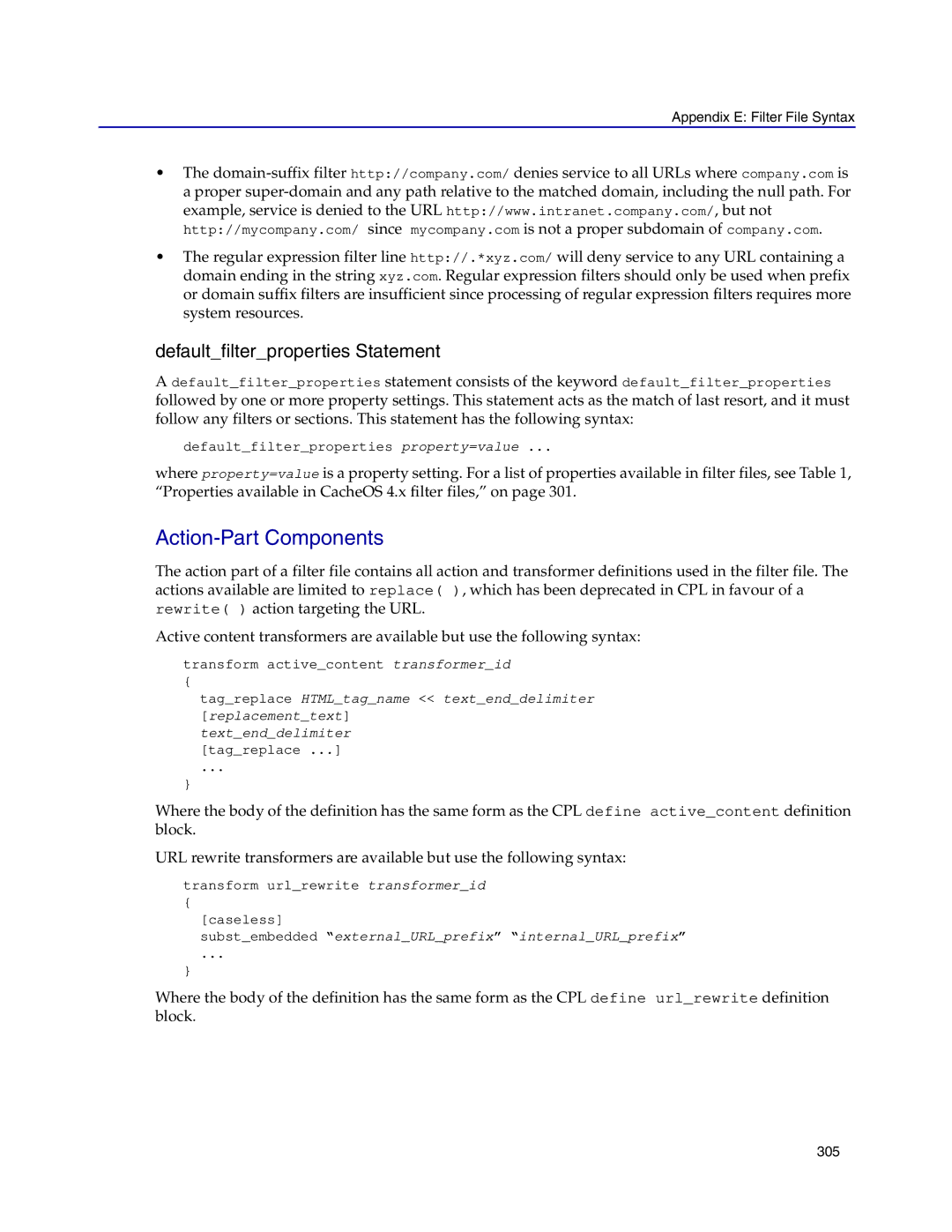Appendix E: Filter File Syntax
•The
•The regular expression filter line http://.*xyz.com/ will deny service to any URL containing a domain ending in the string xyz.com. Regular expression filters should only be used when prefix or domain suffix filters are insufficient since processing of regular expression filters requires more system resources.
default_filter_properties Statement
A default_filter_properties statement consists of the keyword default_filter_properties followed by one or more property settings. This statement acts as the match of last resort, and it must follow any filters or sections. This statement has the following syntax:
default_filter_properties property=value ...
where property=value is a property setting. For a list of properties available in filter files, see Table 1, “Properties available in CacheOS 4.x filter files,” on page 301.
Action-Part Components
The action part of a filter file contains all action and transformer definitions used in the filter file. The actions available are limited to replace( ), which has been deprecated in CPL in favour of a rewrite( ) action targeting the URL.
Active content transformers are available but use the following syntax:
transform active_content transformer_id
{
tag_replace HTML_tag_name << text_end_delimiter [replacement_text]
text_end_delimiter [tag_replace ...]
...
}
Where the body of the definition has the same form as the CPL define active_content definition block.
URL rewrite transformers are available but use the following syntax:
transform url_rewrite transformer_id
{
[caseless]
subst_embedded “external_URL_prefix” “internal_URL_prefix”
...
}
Where the body of the definition has the same form as the CPL define url_rewrite definition block.
305
